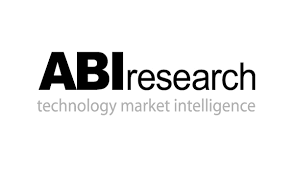
Smart footwear to provide unique data opportunities
Stephen Law
Electronics Embedded Systems Engineering Software Engineering Supply Chain Wearable Technology wearable tech wearablesSmart footwear devices – shoes, insoles, and socks – are seeing a rise in awareness in the consumer and enterprise markets. These devices are providing companies, users, and caregivers alike with tracking capabilities such as location, activity, gait, and falls. ABI Research, a London UK-based market foresight advisory firm providing strategic guidance on the most compelling transformative technologies, forecasts that smart footwear devices will reach over 9 million shipments in 2022, increasing from just under 1 million in 2017, a CAGR of nearly 57%. The enterprise market, despite seeing fewer shipments, will rise at a much faster rate than the consumer market, seeing a CAGR of over 90%. 
“Smart footwear devices have the ability to accurately track numerous metrics, due to being located where most motion is occurring – at the feet – in a highly convenient form factor, i.e., in socks or shoes – items of clothing that the user would already be wearing,” says Stephanie Lawrence, research analyst at ABI Research. “Within the enterprise market, this means that healthcare professionals can easily monitor patients’ vital information and companies can monitor the health and safety of employees.”
In healthcare, smart footwear devices, such as smart socks, allow healthcare professionals to remotely monitor patients’ vitals including heart rate, oxygen levels, and temperature. Devices such as shoes and insoles that measure a patient’s gait can help an injured patient through rehab, determine if a patient is likely to suffer from a fall, and monitor the chances of a patient suffering from a diabetic foot-related injury. Alerts are sent to the healthcare professional in the event of any changes in the patient’s health that require medical assistance. With access to these alerts, healthcare professionals can track the health of a large number of patients simultaneously and ensure that those most at risk get medical assistance immediately. These devices can also be used by family members and caregivers. Companies such as GTX Corp, Orpyx, Owlet Baby Care, ReTiSense, and Siren Care already provide devices with these healthcare monitoring capabilities.
In other enterprise markets, such as field services, transportation, and warehousing, smart footwear devices provide companies with a way to track the health and safety of workers. This includes their location when working remotely, to ensure that they can be located in the event of an emergency; environmental factors, to ensure that any hazards are detected; and the amount of physical stress the worker is put under, to ensure that they are not lifting loads that are too heavy. For emergency service workers, such as firefighters, smart footwear enables workers to be accurately located anywhere in a building, without requiring them to carry an additional device. With access to all of this information, companies can ensure that workers are kept safe, reducing the amount of sick leave and the chances of a worker leaving the company due to unsafe working conditions. Vendors such as Digitsole, SolePower, and Zhor-Tech are investigating and offering these devices to companies.
“Smart footwear devices are starting to get a toehold into the enterprise market, enabling healthcare professionals and companies to track the health and safety of patients and workers,” concludes Lawrence.
